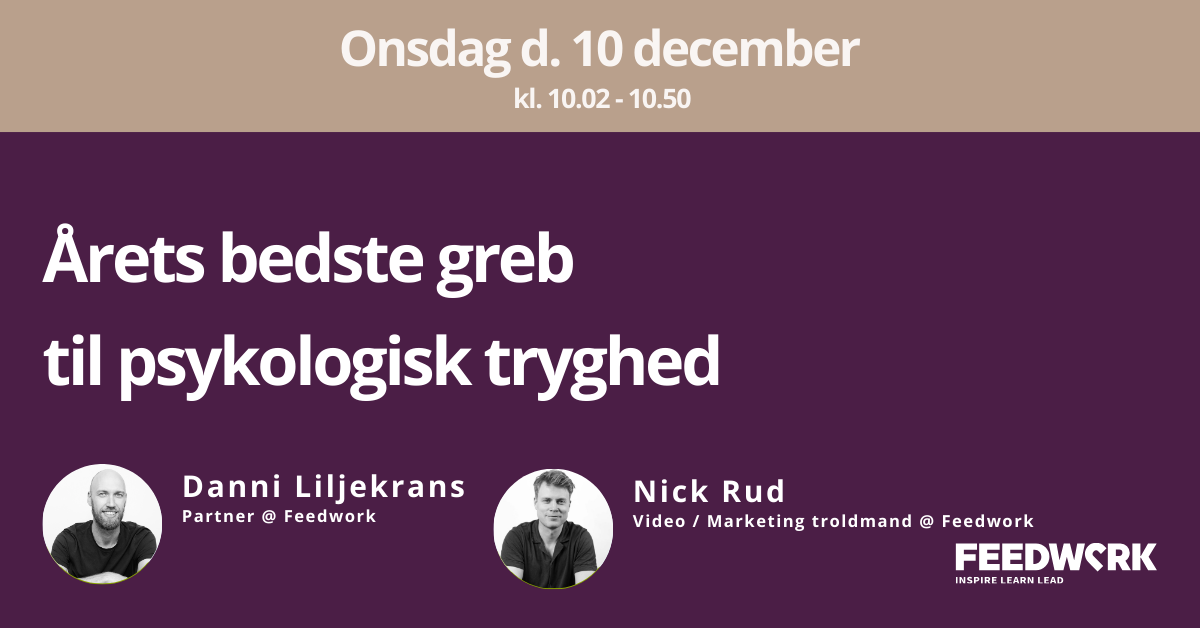Good feedback, bad feedback, positive feedback, or negative feedback. The terms are many and they can be confusing. Sometimes so confusing that it can create misunderstandings and obscurity. Therefore, we will introduce the concept of quality in relation to feedback.
These elements are central to high-quality feedback
Low-quality feedback can look in many different ways. It may seem exhibitive. It may be empty of information. It can be confusing. It can be perceived as patronising. It is perceived as irrelevant. All of these things are not appropriate if we want to use feedback to create strong relationships and good performances.
To ensure that your feedback being perceived as rewarding, motivating and rewarding, you can keep an eye out for these ! 3 things when giving feedback:
- Be guided by a thoughtful intention
It is essential that your good intention shines through in your feedback. The recipient should never doubt that you are investing in them. The feedback must therefore be based on a desire to create learning, development, reinforce behavior, strengthen the recipient's self-image or acknowledge the recipient. If your considerate intention shines through clearly, you can (almost) deliver your feedback in any way.
The opposite of a considerate intention with the receiver at the center is seen when feedback is given as a drain. Because you need to say something, regardless of what the recipient may use it for.
- Motivate for learning
Feedback and learning are closely related, but should not be confused. Just because you've given feedback doesn't mean the receiver has learned anything. We aim to ensure that feedback creates a learning outcome and that your good point is taken into consideration by the recipient. Otherwise, in many situations, feedback will feel like a waste of time, and no one will bother to waste time. Therefore, we must try to provide ourselves with good conditions to create learning together with the recipient.
Here is a list of things that can increase the likelihood of learning:
- That the recipient trusts you
- That you are a trustworthy sender of this particular feedback
- That the recipient can recognize himself in your feedback
- That the recipient has agreed to receive feedback from thee, precisely now
- That you use concrete examples in your feedback
- That your feedback presents an attractive yield
- That the recipient feels that they have participation
- That the feedback contains information
- That you and the recipient are in a stable emotional stage
- Create a sustainable practice
Is it now also not allowed to use unnecessary plastic packaging in its feedback? We don't have to talk about plastic now - we need to look at sustainability in relation to relationships. It is no use that your feedback “diminishes” the relationship with your recipient, so that in the future he will not seek you for feedback. You must therefore strive to ensure motivation, inclusion and balance in your feedback. Among other things, you can go a long way by considering the relationship between your persistent and corrective feedback. Does your feedback center on errors or strengths of your recipient?
In fact, a study by Paul Green shows that we avoid sources of critical feedback if possible. Because who really wants to listen to the colleague who offers nothing but false-focus and harsh criticism? Therefore, we cannot afford for feedback to have a major negative impact on the relationship with our colleagues.
A mindset rather than a model
You may sense that these frameworks leave a lot of room for you to organize your feedback yourself — and that's absolutely correct. This is not a guide to how to give your feedback, but rather a mindset that you can rightly put down to your approach to feedback.
If you want to learn more about how to become sharp at receiving feedback, please consult this episode of the podcast Feedwork Radio.









.png)
.png)